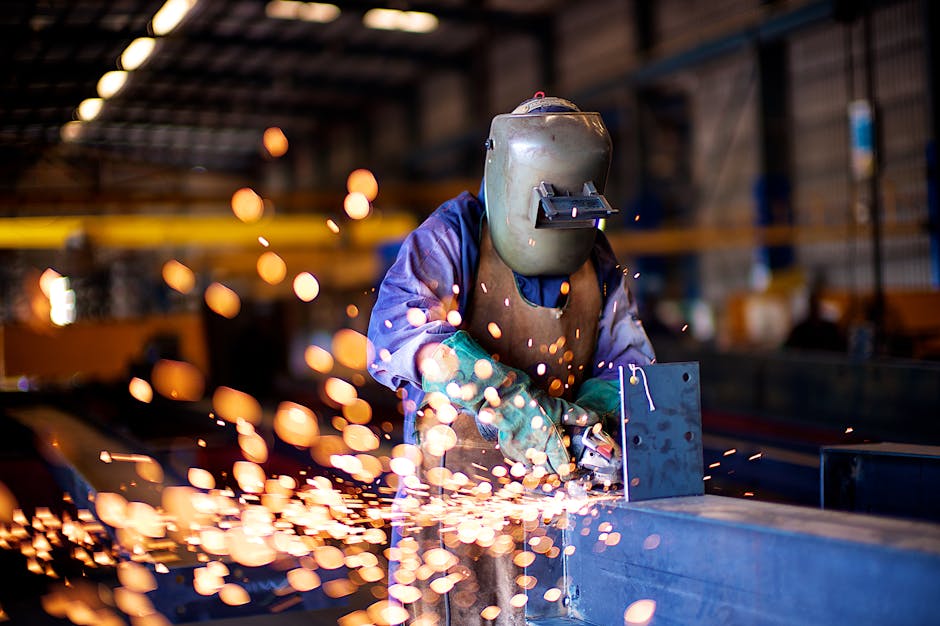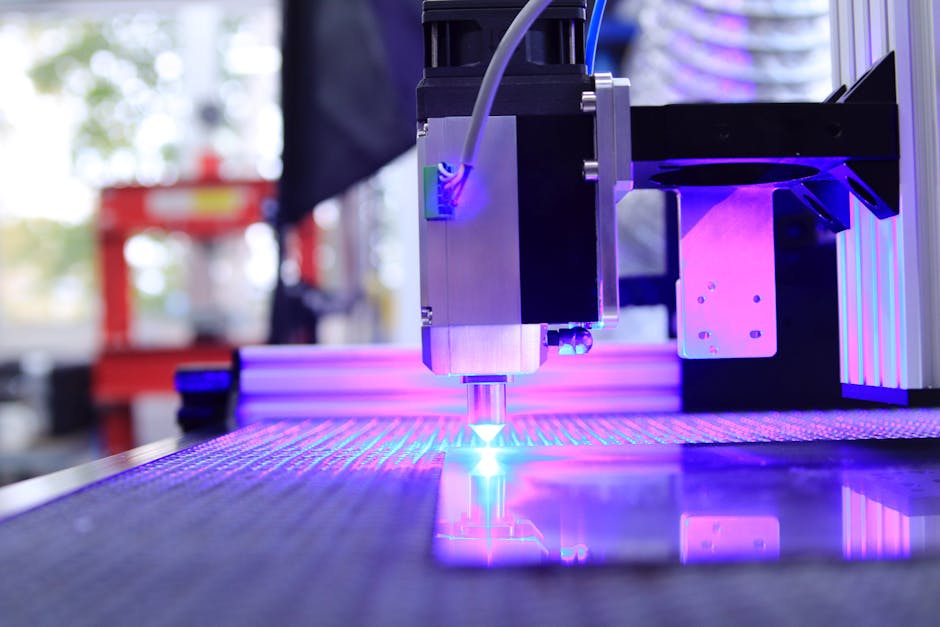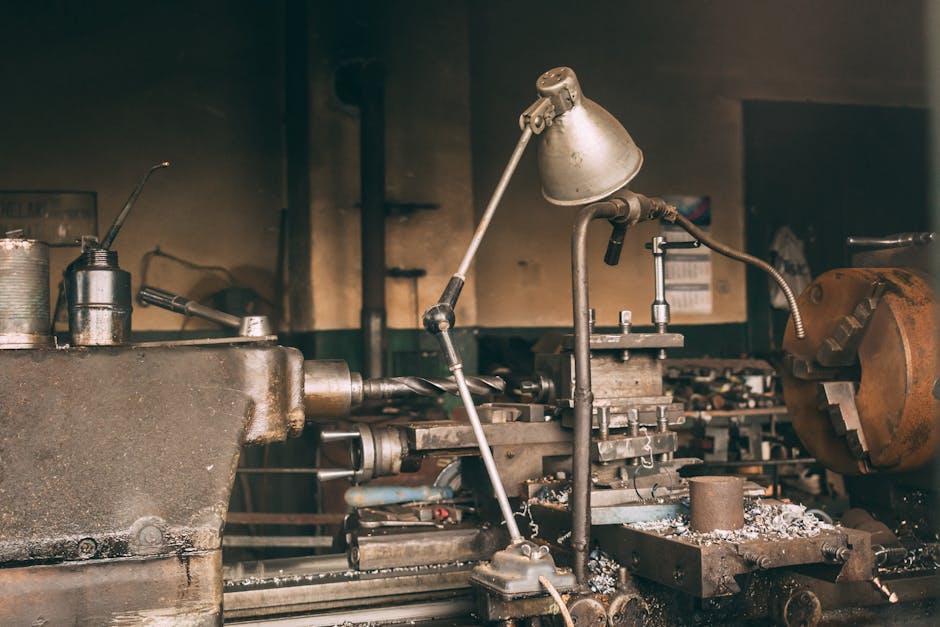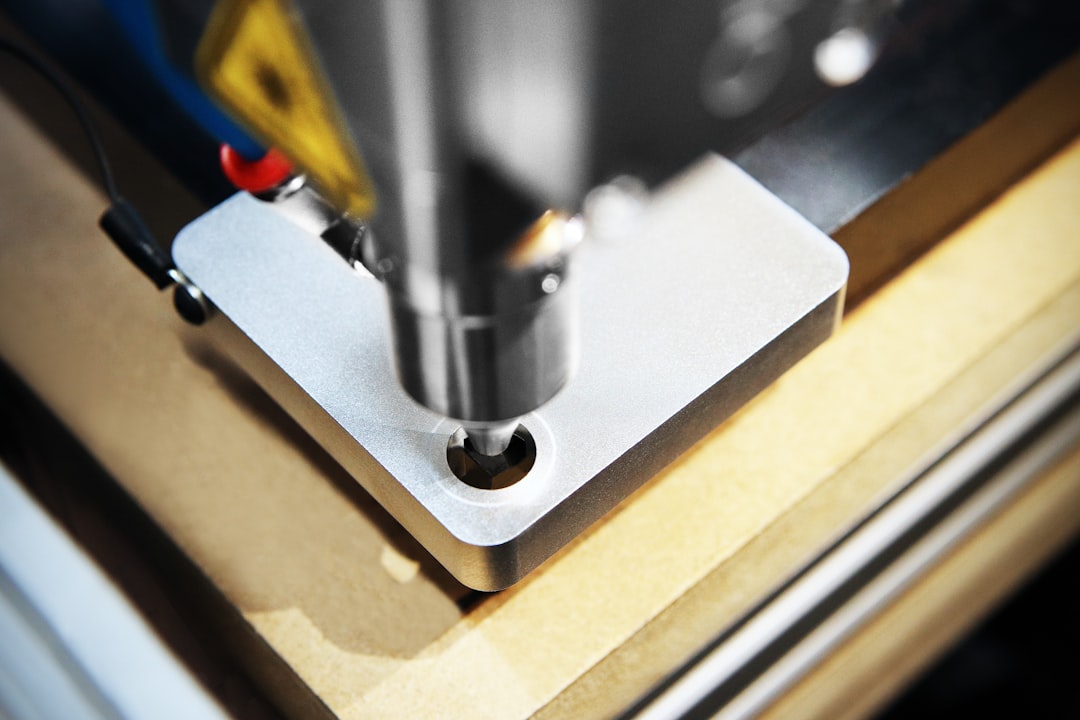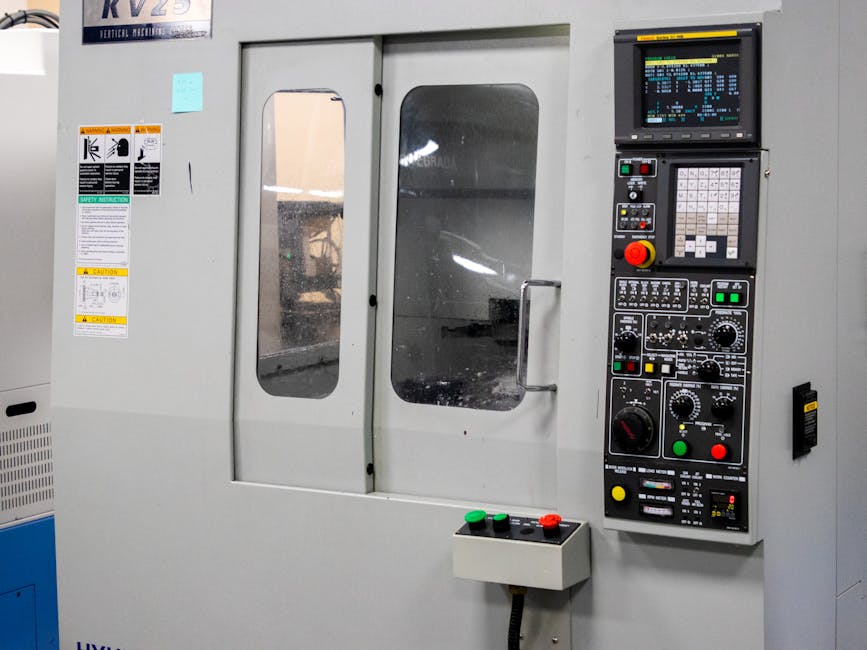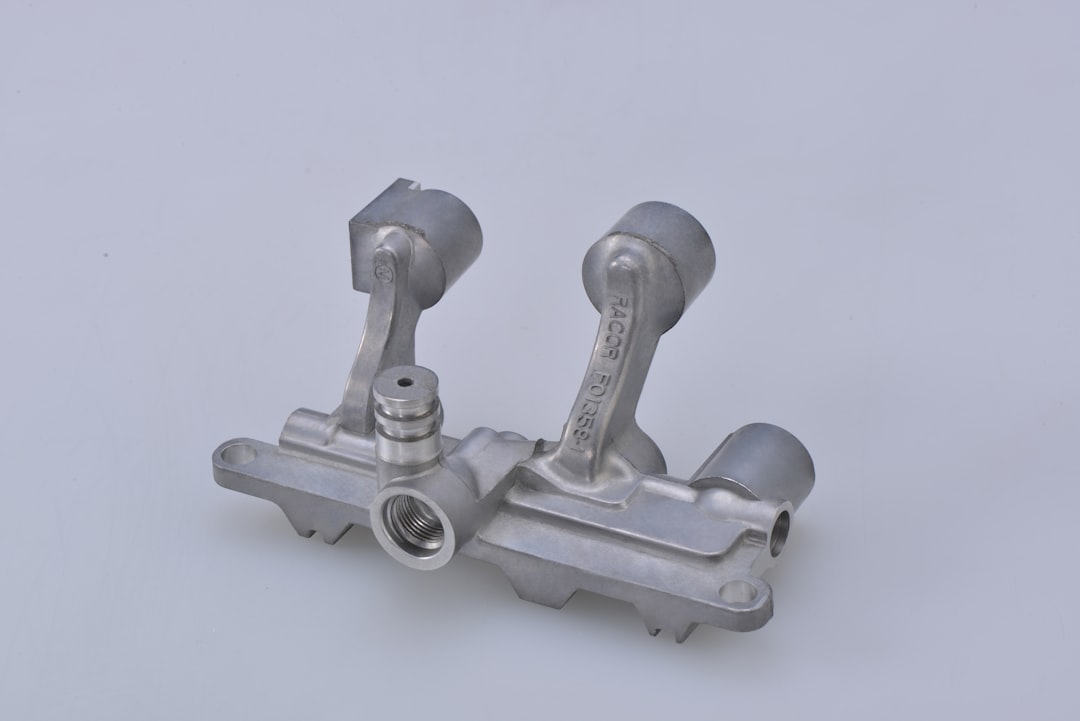Precision in Motion: Building a CNC Lathe from Scratch

When learning how to build a CNC lathe, understanding the essential parts and requirements is crucial. Here’s a summary to get you started:
- Mechanical Structure: Sturdy bed, headstock, tailstock, carriage, and tool post.
- Electronics: Motors, controllers, actuators, and a programmable CNC unit.
- Materials: High-quality steel, aluminum, and machining components.
Building your own CNC lathe is a rewarding, though complex, challenge. CNC lathes have transformed the manufacturing industry with their precision, speed, and versatility.
At TMC Technologies, we understand that quality in CNC machine parts is non-negotiable. These machines can cut, drill, and shape materials like metals and plastics down to the micrometer, meeting the stringent demands of industries like aerospace, healthcare, and electronics.
Furthermore, CNC lathes bring unparalleled efficiency to production lines, greatly reducing manual labor and increasing consistency. Whether you need precise, custom parts or large production runs, CNC lathes are up to the task.

Learn more about how to build a cnc lathe:
– cnc lathes
– cnc machine tools
– cnc turning machine
Materials and Tools Needed
When starting on the journey of building a CNC lathe, having the right materials and tools is essential. Here’s a detailed look at what you will need:
Steel and Aluminum
Steel and aluminum are your primary materials for constructing the frame and various components. Steel provides strength and durability, making it ideal for the bed and other structural parts. Aluminum, being lightweight and easy to machine, is perfect for components that require precision without adding unnecessary weight.
Bolts and Nuts
A variety of bolts and nuts will be necessary for assembling the different parts of the CNC lathe. Ensure you have a range of sizes to accommodate different sections of the build. These fasteners will hold your frame together and secure other components, so opting for high-quality, corrosion-resistant options is advisable.
CNC Control System
The CNC control system is the brain of your lathe. Popular choices include Mach 3 and Acorn controllers. These systems convert your designs into precise movements of the lathe components. Mach 3 is renowned for its user-friendly interface and robust performance, making it a favorite among hobbyists and professionals alike.
Pre-Fabricated Parts
To save time and ensure precision, consider sourcing some pre-fabricated parts. These can include:
- Linear guides for smooth and accurate movement.
- Ballscrews for precise control of the X and Z axes.
- Spindle motors for driving the lathe.
You can find these parts on platforms like Amazon or specialized CNC part suppliers.
Additional Tools
To assemble and fine-tune your CNC lathe, you’ll need a set of tools, including:
- Wrenches and screwdrivers for tightening bolts and nuts.
- Measuring tools like calipers and micrometers for ensuring precision.
- Drilling and tapping tools for creating threaded holes.
- Welding equipment if you opt to weld parts of the steel frame.
Summary
- Steel and aluminum for frame and components.
- Bolts and nuts for assembly.
- CNC control system like Mach 3.
- Pre-fabricated parts for precision and ease.
- Additional tools for assembly and calibration.
Having these materials and tools on hand will set a solid foundation for your CNC lathe project. Next, we’ll dive into the step-by-step guide on how to put everything together.
Step-by-Step Guide on How to Build a CNC Lathe
Material Gathering
To start, you’ll need to gather the essential materials. Steel and aluminum are crucial for constructing the frame and various components. Steel provides the necessary strength and durability, while aluminum is lightweight and easy to machine, making it perfect for precision parts. Additionally, a good variety of bolts and nuts will be required to assemble the different sections of your CNC lathe. High-quality, corrosion-resistant fasteners are advisable to ensure long-term durability.
Consider sourcing some pre-fabricated parts to save time and ensure precision. These parts can include:
- Linear guides for smooth, accurate movement.
- Ballscrews for precise control of the X and Z axes.
- Spindle motors to drive the lathe.
Frame Construction
The frame construction is the backbone of your CNC lathe. Here’s a quick rundown of the main components:
- Bed: The main base where all other components will be mounted. Steel is ideal for its strength.
- Spindle Stock: This holds the spindle and is crucial for accurate rotation.
- Tailstock Body: This supports the other end of the workpiece.
- X and Z Axis Slide: These slides allow the cutting tool to move accurately along the X and Z axes.
- Optional Y-Axis and Sub-Spindle: For more advanced setups, adding a Y-axis or sub-spindle can provide additional functionality.
Installing the CNC Control System
The CNC control system is the brain of your lathe. Popular options include Mach 3 and the Acorn controller.
- Mach 3: Known for its user-friendly interface and robust performance.
- Acorn Controller: Another excellent option for precise control.
You’ll also need a Variable Frequency Drive (VFD) for speed control and a spindle motor to drive the lathe. The VFD adjusts the spindle speed, providing flexibility for different machining tasks.
Assembling the Components
Now that you have your frame and control system, it’s time to assemble the main components:
- Headstock: Holds the spindle and is mounted on the bed.
- Tailstock: Supports the workpiece from the other end.
- Tool Post: Holds the cutting tools and is mounted on the X-axis slide.
- Linear Guides: Ensure smooth, precise movement along the axes.
- Ballscrews: Provide accurate motion control for the X and Z axes.
Calibration and Testing
Calibration and testing are crucial to ensure your CNC lathe operates correctly. Here’s a step-by-step process:
- Encoder: Install an encoder to provide feedback on the spindle’s position.
- G-code Generator: Use software to generate G-code for your machining tasks.
- Homing to Encoder Pulse: Calibrate the machine to recognize the encoder’s pulse as the home position.
- Threading: Test the lathe’s ability to cut threads accurately.
- Rigid Tapping: Ensure the machine can perform rigid tapping, which involves synchronizing the spindle and feed rate precisely.
By following these steps, you’ll have a well-constructed CNC lathe ready for precision machining. Next, we’ll dive into the key components of a CNC lathe to further improve your understanding and setup.
Key Components of a CNC Lathe
When building a CNC lathe, understanding its key components is crucial. Each part plays a vital role in ensuring precision and efficiency. Let’s break down these components to give you a clear picture.
Bed and Frame
The bed is the main base of the CNC lathe. It provides stability and support for all other components. Typically made from steel, the bed must be rigid to withstand the forces during machining. A stable bed helps maintain accuracy in the machining process.
Components mounted on the bed include:
- Spindle Stock: Holds the spindle and is crucial for accurate rotation.
- Tailstock Body: Supports the workpiece from the opposite end.
- X and Z Axis Slides: These allow the cutting tool to move accurately along the X and Z axes.
Spindle and Motor
The spindle is the heart of the CNC lathe. It holds and rotates the workpiece during machining. The spindle’s precision directly affects the quality of the machined parts.
- Spindle Motor: Usually a 3HP, 3-phase motor, it drives the spindle. A powerful motor can handle tougher materials and larger workpieces without stalling.
- Variable Frequency Drive (VFD): Controls the spindle speed. The VFD adjusts the spindle’s RPM, providing flexibility for different machining tasks. This is essential for achieving the desired surface finish and material removal rate.
Control System
The control system is the brain of your CNC lathe. It interprets G-code and controls the machine’s movements.
- Acorn Controller: Known for its ease of use and precise control, this controller is a popular choice among CNC builders.
- Mach 3: Another robust option, Mach 3 is user-friendly and widely used in the CNC community.
- G-code Generator: Software that converts CAD designs into G-code, which the CNC control system uses to operate the machine.
Tooling and Accessories
The tooling is what actually cuts the material. Proper tooling is essential for precision machining and efficient operations.
- Quick Change Tool Post: Allows for rapid tool changes, increasing productivity.
- HSS Blanks: High-Speed Steel blanks are versatile and can be ground to create custom cutting tools.
- Carbide Tooling: Known for its durability and ability to maintain a sharp edge, carbide tooling is ideal for high-precision work.
By understanding these key components, you can ensure your CNC lathe is built for precision and efficiency. Next, we’ll explore advanced features and upgrades to take your CNC lathe to the next level.
Advanced Features and Upgrades
Automatic Tool Changer
An Automatic Tool Changer (ATC) can significantly boost the efficiency of your CNC lathe. It allows for rapid switching between different cutting tools without manual intervention. One popular option is the passive automatic CNC tool changer, which uses a simple mechanism to swap tools quickly and accurately.
Benefits of ATC:
– Increased Productivity: Reduces downtime between tool changes.
– Consistency: Ensures each tool is positioned accurately, enhancing precision.
– Versatility: Easily switch between various operations like turning, boring, and threading.
Another useful feature is the retracting dust shoe. It helps keep the work area clean by automatically retracting away from the tool path, preventing dust and debris from interfering with the machining process.
High-Pressure Coolant System
A high-pressure coolant system is essential for maintaining tool life and ensuring a quality finish, especially when machining tough materials. A 1000PSI pump is a powerful option that delivers coolant directly to the cutting zone, effectively removing heat and chips.
Advantages of High-Pressure Coolant:
– Improved Tool Life: Reduces heat buildup, which can wear out tools quickly.
– Better Surface Finish: Keeps the cutting area clean, resulting in smoother finishes.
– Improved Chip Removal: Prevents chips from re-cutting, which can damage the workpiece and tool.
A thru-tool high pressure coolant system takes this a step further by channeling the coolant through the tool itself. This ensures that the coolant reaches the cutting edge directly, providing even more effective cooling and chip removal.
Turret and Additional Axes
Adding a turret to your CNC lathe can dramatically expand its capabilities. The turret holds multiple tools and rotates to bring each tool into position as needed. A Hirth coupling is often used in these turrets for precise positioning. It ensures that each tool returns to the exact same position every time, maintaining high accuracy.
4th Axis and Rotary Attachments: Incorporating a 4th axis or a rotary attachment allows for more complex machining operations. This is particularly useful for creating intricate parts that require multi-sided machining.
Benefits of Additional Axes:
– Complex Geometry: Enables machining of more intricate shapes and features.
– Reduced Setups: Minimizes the need to reposition the workpiece, saving time and reducing errors.
– Improved Flexibility: Allows for a wider range of machining operations, from simple turning to complex milling.
By integrating these advanced features and upgrades, your CNC lathe can achieve higher productivity, precision, and versatility. Next, we’ll answer some frequently asked questions about building and upgrading a CNC lathe.
Frequently Asked Questions about How to Build a CNC Lathe
How to Make a CNC Lathe Machine?
Creating a CNC lathe machine involves several critical steps. Here’s a simplified guide:
-
Material Gathering: Start by collecting essential materials like steel, aluminum, bolts, and nuts. You’ll also need pre-fabricated parts, which can save you time and effort.
-
Frame Construction: Build the bed, spindle stock, and tailstock body. This forms the main structure of your lathe. The X and Z axis slides are crucial for movement, and you can optionally add a Y-axis or sub-spindle for more complexity.
-
Installing the CNC Control System: A CNC control system like Mach 3 or an Acorn controller is necessary. This will manage the spindle motor and other components.
-
Assembling the Components: Put together the headstock, tailstock, tool post, linear guides, and ballscrews. These parts are essential for the lathe’s operation.
-
Calibration and Testing: Use an encoder and G-code generator for precise calibration. Ensure everything is aligned and test the machine thoroughly before starting any production.
Can You Build Your Own CNC Machine?
Yes, you can build your own CNC machine, but it requires a strong understanding of both mechanics and electronics. Here’s a brief overview:
-
Parts: Collect all necessary parts, including the bed, spindle stock, tailstock, and X and Z axis slides. Pre-fabricated parts can be a big help.
-
Software Installation: Install and configure the CNC control software. Mach 3 and Acorn controllers are popular choices. These will allow you to program and control the lathe.
-
DIY Process: Follow detailed guides and community forums for step-by-step instructions. Websites like OpenBuilds offer plenty of resources.
What is the Basic Structure of a CNC Lathe?
Understanding the basic structure is key to building a CNC lathe. Here are the main components:
-
Bed: The main base where all other components are mounted. It provides stability and support.
-
Spindle Stock: Contains the spindle and spindle motor, which rotate the workpiece.
-
Tailstock: Supports the other end of the workpiece and can be moved along the bed for different lengths.
-
X and Z Axis Slides: These allow the cutting tool to move precisely across the workpiece. The X-axis controls the horizontal movement, while the Z-axis handles the vertical movement.
By following these steps and understanding the basic structure, you can successfully build a CNC lathe machine.
Next, we’ll dive into the specifics of some key components you’ll need for your build.
Conclusion
Building a CNC lathe from scratch is a complex but rewarding project. It involves gathering materials like steel and aluminum, constructing the frame, installing a CNC control system, assembling various components, and performing precise calibration and testing. This journey requires expertise in mechanics, electronics, and programming, but the result is a highly versatile machine capable of producing precision-machined parts.
At TMC Technologies, we understand the intricacies involved in creating and maintaining CNC lathes. Our expertise in CNC precision machining ensures that every part we produce meets the highest standards of quality and accuracy.
Custom Applications
Every machining project has unique requirements. Whether you’re in aerospace, automotive, or medical manufacturing, we tailor our solutions to meet your specific needs. Our team excels in custom tool design, ensuring each tool optimizes performance and durability.
Tool Design and Fabrication Services
Beyond tool design, we offer comprehensive fabrication services. From grinding and heat treating to light assembly, we provide a one-stop solution for all your CNC needs. Our advanced CNC machines and skilled machinists ensure every part we produce is of the highest quality.
Choosing TMC Technologies means partnering with a company committed to pushing the boundaries of precision machining. We invite you to explore our capabilities to see how we can help you achieve unparalleled success in your projects.
In the field of precision machining, every detail matters. Let us help you ensure that your work not only meets but exceeds expectations. With TMC Technologies, open up the full potential of high-precision CNC lathes and propel your business towards success.

By leveraging our expertise and dedication to innovation, you can trust TMC Technologies to support your operations and deliver precision-machined parts that meet the highest standards.
